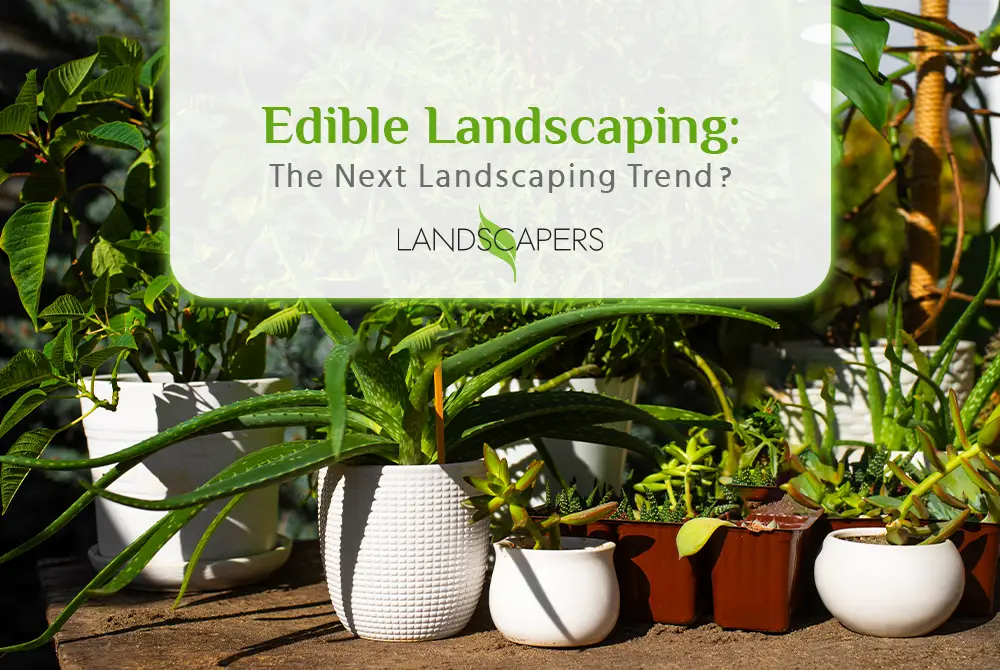
Edible Landscaping: The Next Landscaping Trend?
In the past few years, there has been a noticeable shift in the way we design and utilize our outdoor spaces, including our backyards, front yards, and public green areas. This evolving trend is known as edible landscaping, which involves incorporating edible plants into our gardens. By merging the visual appeal of traditional landscaping with the functionality of growing our own food, this innovative approach to gardening has gained popularity. As individuals increasingly prioritize sustainability, food security, and overall well-being, edible landscaping has emerged as a harmonious fusion of aesthetics and practicality.
What is Edible Landscaping?
Edible landscaping refers to the incorporation of plants that produce food into decorative landscapes. It entails the utilization of fruits, vegetables, herbs, and edible flowers instead of, or in conjunction with, traditional ornamental plants. Envision a garden where raspberry bushes replace roses, or where a row of kale acts as a lively border. This idea not only enhances the aesthetic charm of a garden but also adds functionality by offering fresh, organic produce.
Why is Edible Landscaping Gaining Popularity?
Several factors are contributing to the rise of edible landscaping:
Sustainability
With the rise of environmental awareness, an increasing number of individuals are seeking methods to lessen their carbon footprint. Edible landscaping encourages local food cultivation, thereby decreasing the necessity for extensive transportation and lowering greenhouse gas emissions. Through cultivating their own food, people can further diminish the packaging waste linked to commercially bought produce.
Health and Nutrition
Homegrown fruits and vegetables are frequently richer in nutrients and fresher compared to the ones purchased from stores. They are devoid of harmful pesticides and can be picked when they are at their prime ripeness, guaranteeing the highest level of nutrient content. Engaging in gardening is also a beneficial activity that promotes physical exercise and helps alleviate stress.
Food Security
During periods of economic instability and worldwide disturbances, possessing a personal food source can prove to be a valuable advantage. Edible landscaping plays a crucial role in enhancing food security as it enables individuals to cultivate their own fruits and vegetables, thereby lessening reliance on outside food supplies.
Aesthetic and Functional Appeal
Edible plants possess an equal amount of beauty compared to ornamental ones. Numerous fruit trees showcase breathtaking blossoms, while vegetables such as Swiss chard and rainbow carrots contribute vibrant hues to the garden. Additionally, herbs like lavender and rosemary not only provide a delightful visual and olfactory experience but also attract advantageous insects, thereby improving the ecological well-being of the garden.
Getting Started with Edible Landscaping
Initiating an edible landscaping project can bring about a sense of excitement and fulfillment. Below are a few guidelines to assist you in commencing this endeavor:
Plan Your Space
Evaluate the space you have and the amount of sunlight exposure it receives. Different plants have different needs, so it is important to select the appropriate ones based on your specific conditions. If space is a constraint, you may want to explore options such as raised beds, containers, or vertical gardening techniques.
Choose Your Plants
Select a mix of plants that suit your taste, climate, and garden layout. Some popular choices for edible landscaping include:
- Fruit Trees: Apples, pears, cherries, and figs.
- Berry Bushes: Blueberries, raspberries, and strawberries.
- Vegetables: Tomatoes, peppers, lettuce, and kale.
- Herbs: Basil, thyme, rosemary, and mint.
- Edible Flowers: Nasturtiums, pansies, and marigolds.
Design with Purpose
Enhance the aesthetic appeal of your garden by integrating edible plants. Utilize them as borders, ground covers, or focal points to add visual interest. Blend various textures, colors, and heights to craft a captivating and diverse landscape.
Maintenance and Care
Maintaining your edible landscape on a regular basis is of utmost importance. This entails tasks like watering, weeding, pruning, and fertilizing. It is highly advisable to adopt organic techniques, such as composting and employing natural pest control methods, to ensure the health and chemical-free nature of your garden.
The Future of Edible Landscaping
The growth of edible landscaping is expected to persist as an increasing number of individuals recognize its advantages. This practice harmonizes seamlessly with modern principles of sustainability, well-being, and self-reliance. Community gardens, urban farms, and even public parks are progressively adopting edible landscaping, thereby expanding the availability of fresh produce to a wider population.
To summarize, edible landscaping embodies a perfect fusion of aesthetics and functionality. By converting our gardens into areas that provide sustenance for both our physical and emotional well-being, we have the opportunity to build a future that is both sustainable and adaptable. Regardless of whether you possess a vast yard or a compact balcony, the realm of edible landscaping offers boundless prospects to discover. Therefore, why not embrace this eco-friendly and delectable trend? Your palate, as well as the environment, will express gratitude.

